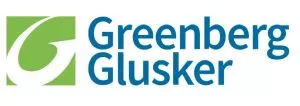- with readers working within the Pharmaceuticals & BioTech industries
- within Intellectual Property, Law Department Performance and Wealth Management topic(s)
On February 14, 2025, the California State Water Resources Control Board (State Water Board) issued a compliance guidance letter for industrial facilities subject to the Statewide Industrial Stormwater General Permit (IGP) and located in wildfire-affected counties under a Governor-declared state of emergency. This guidance addresses wildfire-related contamination in stormwater discharges and outlines compliance options available to affected dischargers. The guidance recognizes that negative wildfire impacts on industrial facilities may include higher levels of pollutant in the stormwater discharges unrelated to the industrial activities. Below are the key takeaways.
Unrepresentative Stormwater Samples
If impacted by wildfires, facilities must still collect, analyze, and report stormwater samples even if wildfire contamination—not industrial activity—contributes to elevated pollutant levels. However, dischargers may:
- Identify and report wildfire-impacted samples;
- Provide photographic documentation of affected areas; and
- Submit a rationale explaining why results are not representative of facility operations.
Such claims must be documented and submitted in SMARTS within 30 days of receiving lab results. Dischargers may also invoke Cal. Water Code §13385(j)(B) (natural disasters) for regulatory relief.
Exemptions for Unsafe Sampling Conditions
Sampling/visual observations are not required if:
- The facility is inaccessible due to fire damage or government closures; or
- Conditions pose a mudslide or safety hazard after storms.
All missed sampling events must be documented in the SWPPP and Annual Report with a justification. The justification should include wildfire-specific information related to missed sampling events and visual observations.
Non-Qualifying Storm Events
If a discharge is not representative of industrial activities, it may be submitted as a non-qualifying storm event in SMARTS and will not count toward Numeric Action Level (NAL) exceedances.
Minimum Storm Event Sampling Requirements
Facilities unable to collect the required four qualifying storm event samples per year due to insufficient storms will not be deemed in violation, provided they document a good faith effort to comply.
Temporary Suspension of Industrial Activities
Facilities suspending operations for 10 or more consecutive calendar days may request to pause monitoring requirements if:
- Sampling is infeasible due to site inaccessibility or unstaffed conditions; and
- Best Management Practices (BMPs) are implemented to stabilize the site.
Requests must be submitted in SMARTS at least seven days in advance, including a revised SWPPP, justification, and resumption timeline. The Regional Water Quality Control Board may review the information and request revisions or deny the request.
Legal Considerations for Anticipated Non-Compliance
If a facility anticipates non-compliance due to wildfire impacts, it must provide advance notice to:
- The Regional Water Quality Control Board
- The local MS4 agency
Key Compliance Takeaways
- Reporting Obligations Remain Strict – Even with wildfire-related impacts, facilities must comply unless a valid exemption applies.
- Regulatory Flexibility Exists but Requires Proper Documentation – Claims for relief must be supported by clear evidence.
- Proactive Communication with Regulators is Critical – Early engagement may help mitigate compliance risks.
- Mitigate Enforcement Risks –To mitigate enforcement risks, dischargers should document all wildfire-related compliance challenges and consult with environmental counsel to assess regulatory exposure and defenses.
The content of this article is intended to provide a general guide to the subject matter. Specialist advice should be sought about your specific circumstances.



